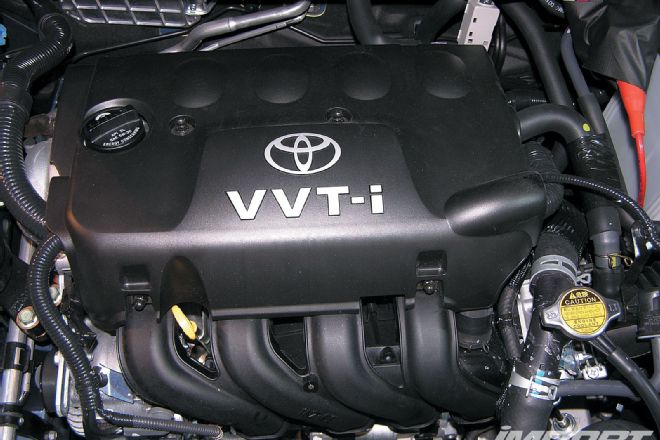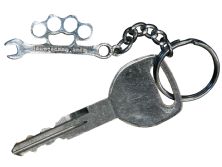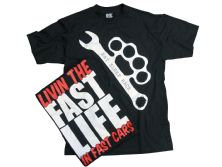Only one Eric Hsu fact for the next few months. Fact: Eric Hsu is going to pick his favorite tech questions, and we're going to hook up whoever submitted them with a T-shirt and keychain from our go-fast homies at Eat Sleep Race. Diggin' those wrench knucks? We know Philip is!
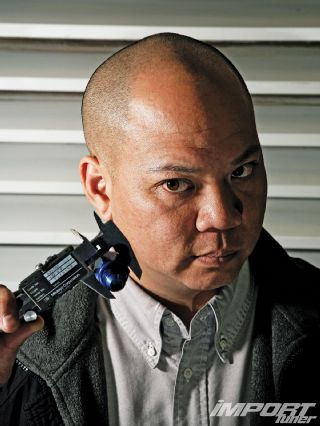 |
Toyota Echo Transmissions, Backfiring, and More - Question It
|
Toyota Echo Transmissions, Backfiring, and More - Question It
Send your best to:
[email protected]
and don't forget your shipping address.
Monster Echo
I'm a high school student with an '03 Toyota Echo. The car was gifted to me by my grandmother and it would be disrespectful to sell it and get something with a little more power. After some researching, I decided to build the 90hp 1.5L 1NZ-FE engine into a 250hp beast, but hit a major dilemma when considering swapping the four-speed automatic for a manual transmission: I came to the conclusion that I want a C160, and not the optional C150 from the factory. Where can I purchase a C160 transmission for under about $800, and are there aftermarket clutches, flywheels, or short-throw shifters available for it?
-Dawid Fraczek
Via importtuner.com
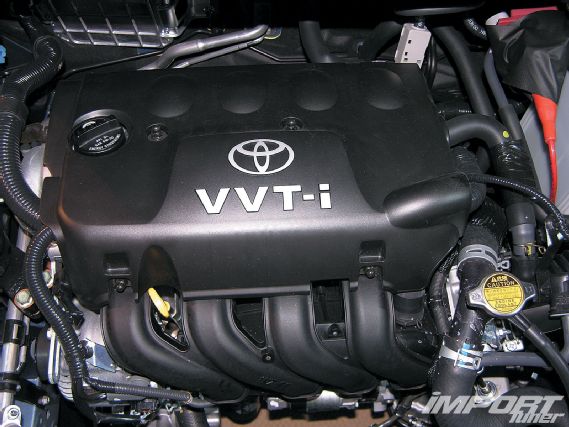 |
Toyota Echo Transmissions, Backfiring, and More - Question It
|
Toyota Echo Transmissions, Backfiring, and More - Question It
I'm not even going to front and try to sound like I know WTF is going on in the Echo/Vitz world, but I do know that the C160 transmission is a rare transmission in the U.S. since they only came in the AE111 and AE101 JDM Corollas. You'll probably have a much better chance finding the C60/C64 transmissions from the 2ZZ-GE-powered ZZT231 '00-'05 Celica Matrix/ Corolla XRS and the Lotus Elise here in the States. But even if you did find a C160/60/64 trans, I think the other problem you'll run into is the lack of available bellhousing adapters for the 1NZ-FE engine. You might consider getting a C150 five-speed transmission in the interim and then shopping around for a six-speed alternative while you are enjoying your newly found 250 hp.
Wiring Woes
I own a '96 240SX into which I have recently begun swapping an SR20DET. The car will be my daily driver and needs to pass NY state inspection. The swap is almost done, but I'm missing an important wire from the main harness to the crank position sensor which is listed by Nissan as part number 24079-70F20. Nissan no longer makes this part and most junkyards I've called (mostly local ones) don't have the car or wire on hand. If you know where I can procure this part, or even the connectors to fabricate it myself, I would appreciate it.
-Phantom Gett
Via importtuner.com
Car manufacturers are required by law to supply replacement parts for at least 10 years in the USA. Unfortunately, it's been 14 years since they made your 240SX, so that makes you S.O.L. Making a harness from scratch is going to be a serious bitch since it's unlikely you'll be able to locate the connectors. You're probably better off getting a harness from another car with the same engine, such as an Altima or Frontier, and then modifying it. Since both the Altima and Frontier are far more common and abundant than the 240SX, you can probably go to your local junkyard and check the harnesses out. Also, you might want try some of the California junkyards since there were plenty of 240SXs in California. If all else fails, try some of the California-based 240SX/SR20DET tuners such as G-dimension, LS Automotive, Dynamic Autosports, etc. Some of these shops literally have piles of engine harnesses, engines, and parts stacked up in the corners of their shops.
Backfire
I own a B16-powered '93 Honda Civic with Stage One Skunk2 cams, RC Engineering 310 cc/min injectors, a Bisimoto header, K&N intake, an A'pexi exhaust, and Hondata S100 ECU. My problem is that every time VTEC engages, the car experiences a real bad misfire. I unplugged the VTEC solenoid and the misfire disappeared, but the car won't idle. I've taken the Civic to numerous mechanics and they've troubleshot the problem as the distributor. I've changed the distributor three times, spark plugs, plug wires, fuel filter, and even switched the ECU, but still encounter this misfire.
-Anonymous
Via importtuner.com
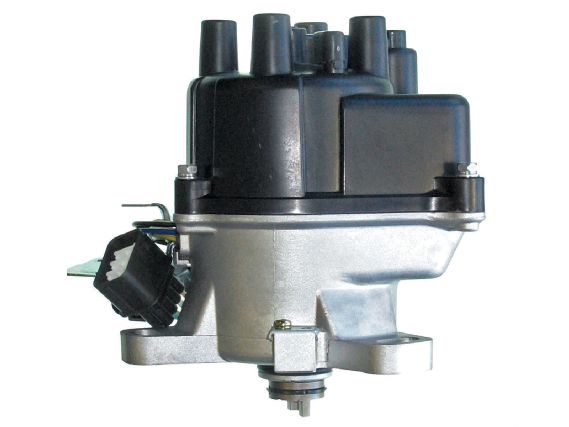 |
Toyota Echo Transmissions, Backfiring, and More - Question It
|
Toyota Echo Transmissions, Backfiring, and More - Question It
The reason why the shops blame the distributor is because B-series distributors are known to have worn bearings with high mileage. Are you replacing the distributor with new or rebuilt units? Installing used units won't always do the trick unless you're using known good distributors (i.e., remove one from a perfectly running car and install it in yours). There are also a number of things that could be going on, including loose terminals in the connectors of your engine harness, bad spark plugs, bad spark plug wires that leak spark, a bad distributor cap and/or rotor, or bad ignition coil inside of the distributor. If you didn't have the Hondata S100 professionally tuned, there's a chance your maps are causing the misfire. If you have a high-mileage engine, you might want to check compression and give it a leakdown test as well. Remember that man created cars, so therefore man should be able to fix cars. Just slow it down, think carefully, and take a more methodical approach to your diagnosis. Unplugging wires and sensors randomly and blindly changing parts isn't going to help you fix anything.
Old-School Celica
I own a '78 Toyota Celica lift-back with a 20R carbureted engine and five-speed that has been built for stadium racing, but I'm interested in swapping it for a 22RE fuel-injected engine. Besides the motor and ECU, what else would be needed to complete this swap? I'm from NorCal and would be grateful if you can refer me to any shops around the San Francisco/Sacramento area that could help me out. My other option is to install the 4.3L V-6 engine that's sitting around in my garage. Are there any shops in my area that could help with that swap? And yes, I want to keep it a five-speed.
-Walter Smith
Fairfield, CA
If you're looking to install a complete 22RE, then you'll need the motor, ECU, sensors, engine harness, coil, fuel pump, and fuse boxes from an '82 or newer Celica. To be honest, you're probably best off removing the entire engine electrical system and transplanting it into your'78 Celica. The good news is that cars were simpler in the early '80s, so I don't think the swap would be very complex, but unfortunately I don't know of any Toyota performance specialists in Northern California. Try contacting Toysport in El Segundo, CA, for any possible leads on shops in Northern California. There just aren't many old-school Toyota shops out there anymore.
Going with the 4.3L V-6 presents a whole different set of variables and I assume you're talking about a late-model Tacoma engine. The newer ECUs are only going to be happy in cars they were designed for, which in your case is a Tacoma. Newer ECUs and OBD-II systems are constantly looking for sensor failures and predictive engine conditions and will put engines in "limp modes" if these fail-safes are executed. Newer ECUs are also part of a CAN computer network, so unless you have a way to transplant almost all of the electronics, it isn't going to be a very successful swap. Another option would be to run a stand-alone ECU on the V-6, but that makes the swap very expensive. I'd stick to a 22RE, or better yet, a 22RT turbo engine from the '85-'87 Toyota turbo truck and call it a day.
Third Pedal Evolution
I've heard all the hype and seen the quarter-mile times of Mitsubishi's new TC-SST transmission. It looks like it could be the wave of the future, considering that the Nissan R35 GT-R uses a similar system. I honestly don't know if the two systems share any similarities, however the real question I want to ask is, how well can we expect the TC-SST to hold up to increased horsepower and torque? Will it be as graceful as the Nissan system?
-Tom Heale
Sault Ste Maire, Canada
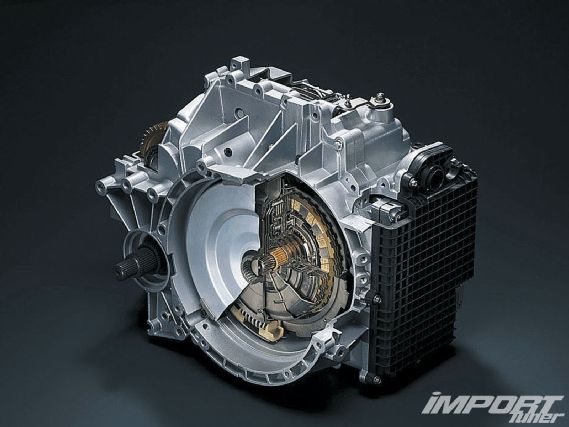 |
Toyota Echo Transmissions, Backfiring, and More - Question It
|
Toyota Echo Transmissions, Backfiring, and More - Question It
First, you need to compare the weight and power output of the two cars. The EVO X MR is approximately 3,400 lbs and has an output of 300 hp. The GT-R is 4,000 lbs and has a 500hp output. Naturally, the Nissan is going to be the more robust transmission from the start, but that's because it was designed to withstand greater power output and a heavier curb weight. Personally, having driven the GT-R and owning an EVO X MR with the TC-SST transmission, I can tell you that the MR's transmission is much smoother at low speeds, but when aggressively driven, the GT-R's transmission shifts faster and quicker than the MR's. It's my guess that since the Nissan has a longitudinal layout, there's a larger space envelope to build a stronger transmission with stronger and bigger internals. Mitsubishi had to work with a transverse layout with limited space-it barely fits between the engine and frame rail. Barely. Stock GT-R transmissions seem to be able to handle upwards of 750 hp at the wheels (for a limited amount of time), but the stock MR transmission seems to have an unofficial limit of 400 hp at the wheels. This doesn't surprise me one bit knowing that the GT-R's transmission is nearly twice the size. Regardless, both cars are awesome to drive and the twin-clutch transmissions are great if you're not looking to make 2,000 hp and just want to enjoy the enhanced driving experience of having the ultra-quick shifts of a twin-clutch box. For the guys looking to make huge power, they'll need to be patient as aftermarket and racing drivetrain manufacturers start to design upgraded components and the ECU hackers reverse engineer transmission control strategies.
You're right as far as the wave of the future goes: twin-clutch transmissions are here to stay. You'll find them taking over the automatic transmission as they become cheaper to design, build, and manufacture. They help manufacturers extract better performance and fuel mileage out of their cars, and make cars faster and easier to control. I'm not saying that I don't enjoy slamming an H-pattern shifter around (or better yet, a sequential transmission), but a twin-clutch does enhance the driving experience, in my opinion, and blows old-school automatics out of the water.
This Month's Winning Letter
Metal Surface Treatments
I grew up on my dad's stories of pulling and rebuilding engines in his hot rods over weekends when he was my age, and it's given me the courage to learn how to build an engine myself. My question is: What are the pros and cons of using metal treatments like WPC? I always see it being used in various motorsports, and even in the scooter buildup featured on MotoIQ.com, and wonder if the investment is worth the cost. Does it help engine longevity between rebuilds or give any significant performance boost? I've had my eye on building an SR20 and wanted to know if this would be a good investment when I get around to it.
-Philip Erdeljohn
Via importtuner.com
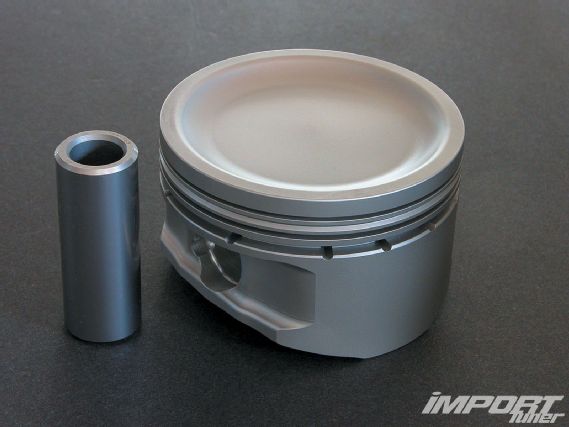 |
Toyota Echo Transmissions, Backfiring, and More - Question It
|
Toyota Echo Transmissions, Backfiring, and More - Question It
Machining tolerances and material science have come a long way since the time of your dad's hot-rods. Tighter tolerances equal a longer service life and greater efficiency. Engines of today are designed to run much tighter tolerances because everything can be manufactured from better materials. For these reasons, the engine builder also needs to pay much more attention to what he's doing in preparation and during the build process. Attention to detail will define your success with modern engines, so pay attention and don't be cheap and cut corners.
As for metal treatments, there are many different coatings-REM, WPC, and others-and each has their benefits in the correct application. REM is a chemical treatment that effectively micropolishes the surface of a part to a mirror finish (technically called an isotropic super finish), thereby reducing friction and improving the surface strength of a metal. WPC can also be used in conjunction with some coatings such as DLC to enhance DLC's adhesion to the base metal. In some cases, both REM and WPC can be used together to enhance each other's benefits. WPC is a surface treatment that reduces friction, increases seal quality, and will increase the life of components. In some cases, WPC can also strengthen parts by enhancing density at the surface. Think of WPC as a process that creates micro dimples on the surface of a metal which enables the surface to retain lubricants to reduce friction, cool metals, increase sealing ability, and increase the lifespan of a component. WPC uses different types of medias for different applications, so it's a highly specialized treatment that can only be done by the parent U.S. office in Torrance, CA, at this time. I've used the WPC process in many engines and have found it to be beneficial to power output, engine smoothness, and longevity. The Japanese have been using WPC in motorsports and in the tuning world for over 15 years now. I would recommend having your bearings, cylinder bores, piston rings, wristpins, and crankshaft journals WPC treated. If you can afford it, I'd also recommend having your camshafts, followers, and valve stems treated as well. If you're a super-baller, have the cams and valves REM treated and then WPC treated. Then have your cam followers WPC treated and DLC coated. And if you're a super-ultra-baller, you might as well have the transmission and LSD REM treated and then WPC treated also!

